A Toilet Seat with a Doodle Detail
This wooden toilet seat was found during the 1979 excavations in Kirk Close, Perth. It was found resting on a timber frame over a cess pit, leaving us in no doubt about its function! It dates to the late 13th or early 14th century.
Along one edge of the upper surface of is a band of decorative graffiti: chevrons and diamonds. These were most likely incised into the wood with a knife by someone whiling away the time while using the facilities, rather than being a feature of the object’s original design.
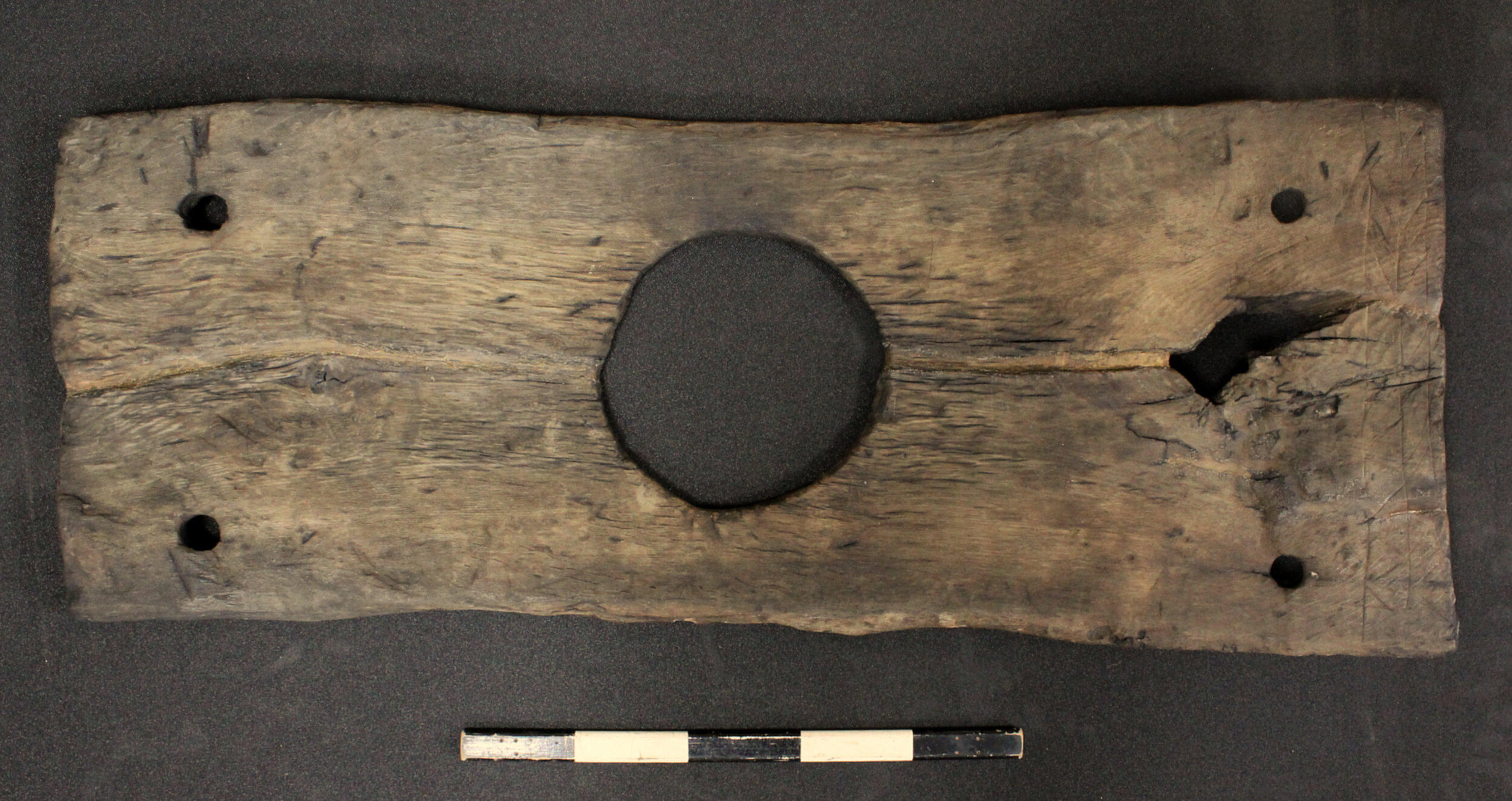
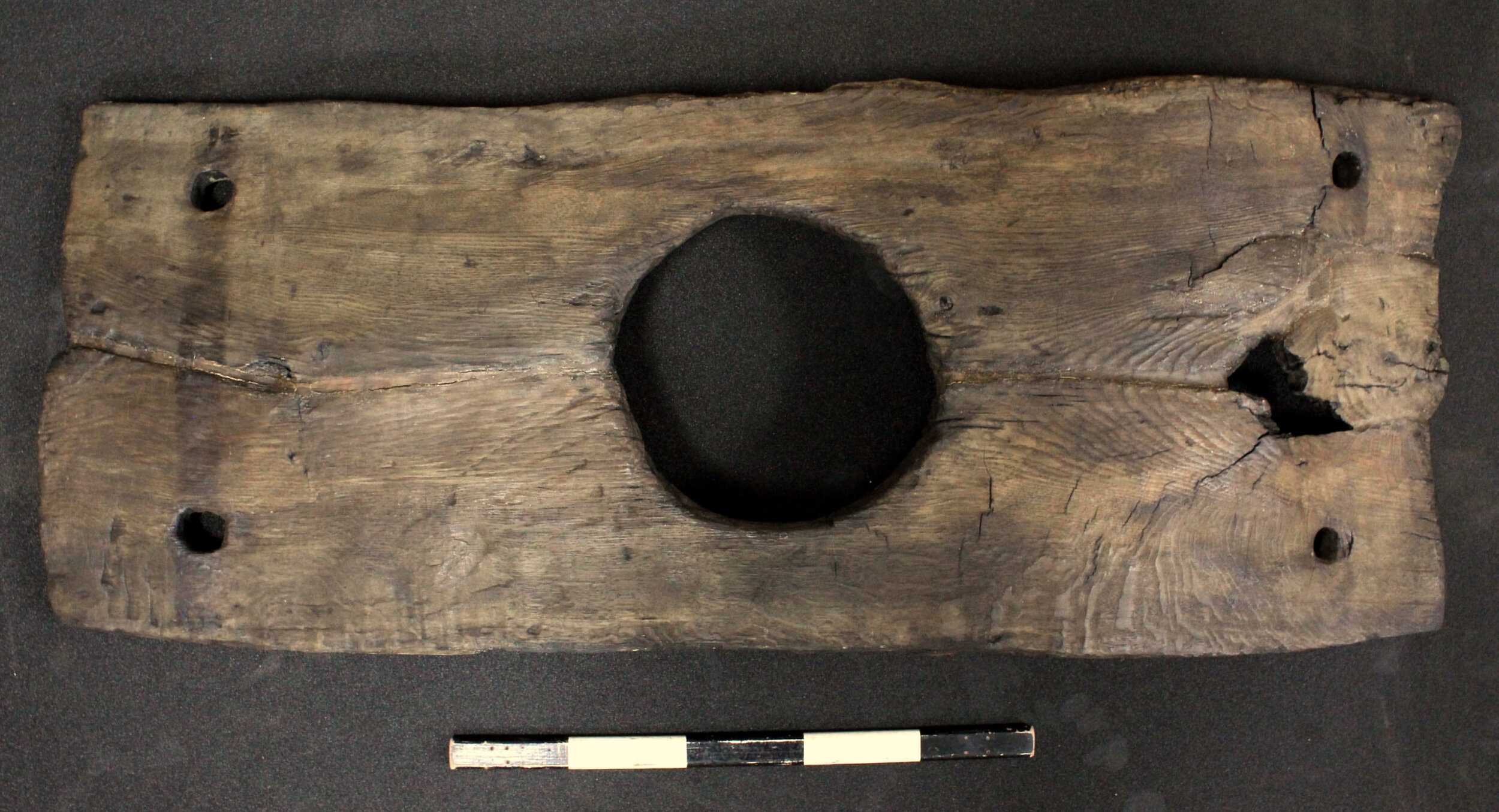
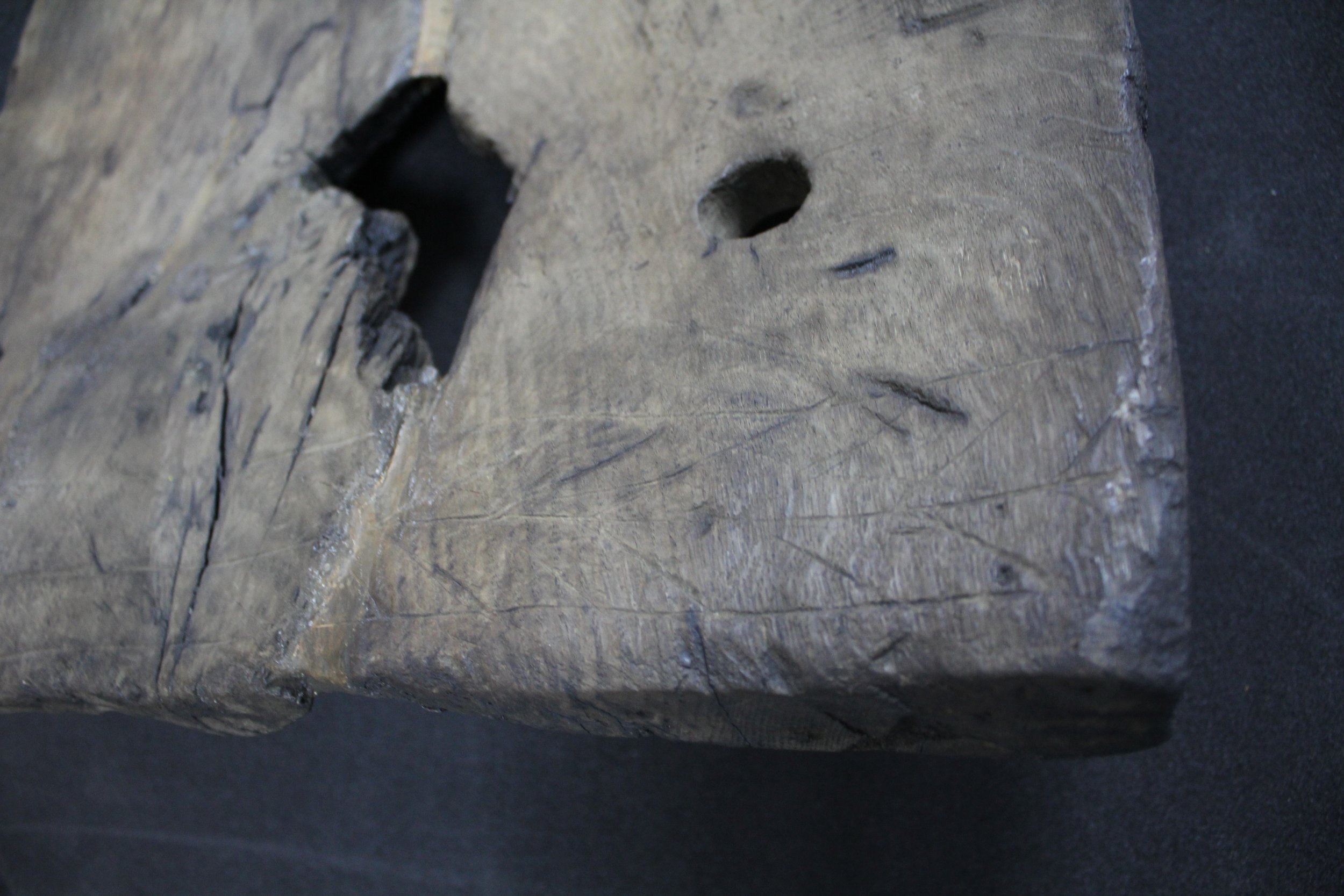
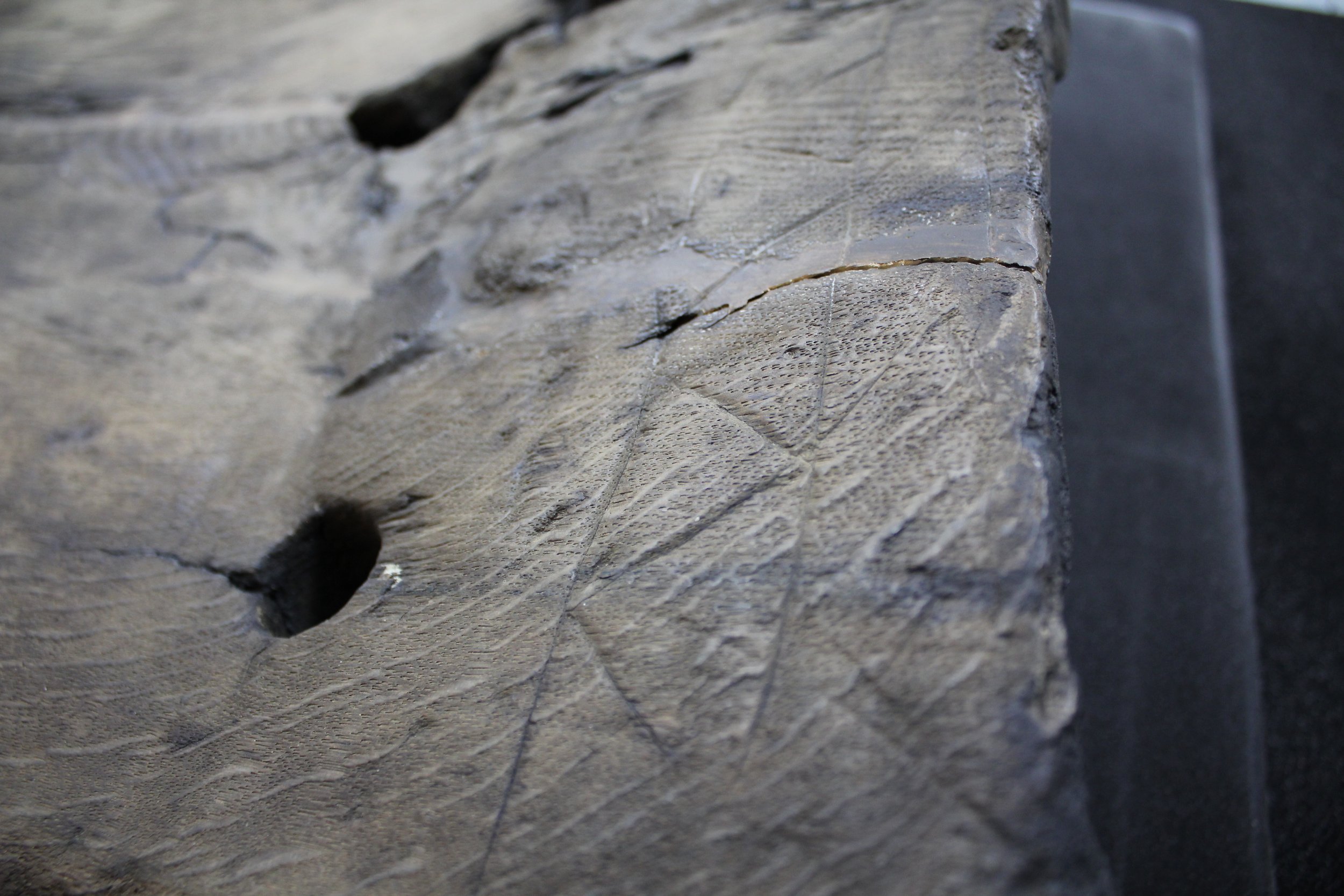
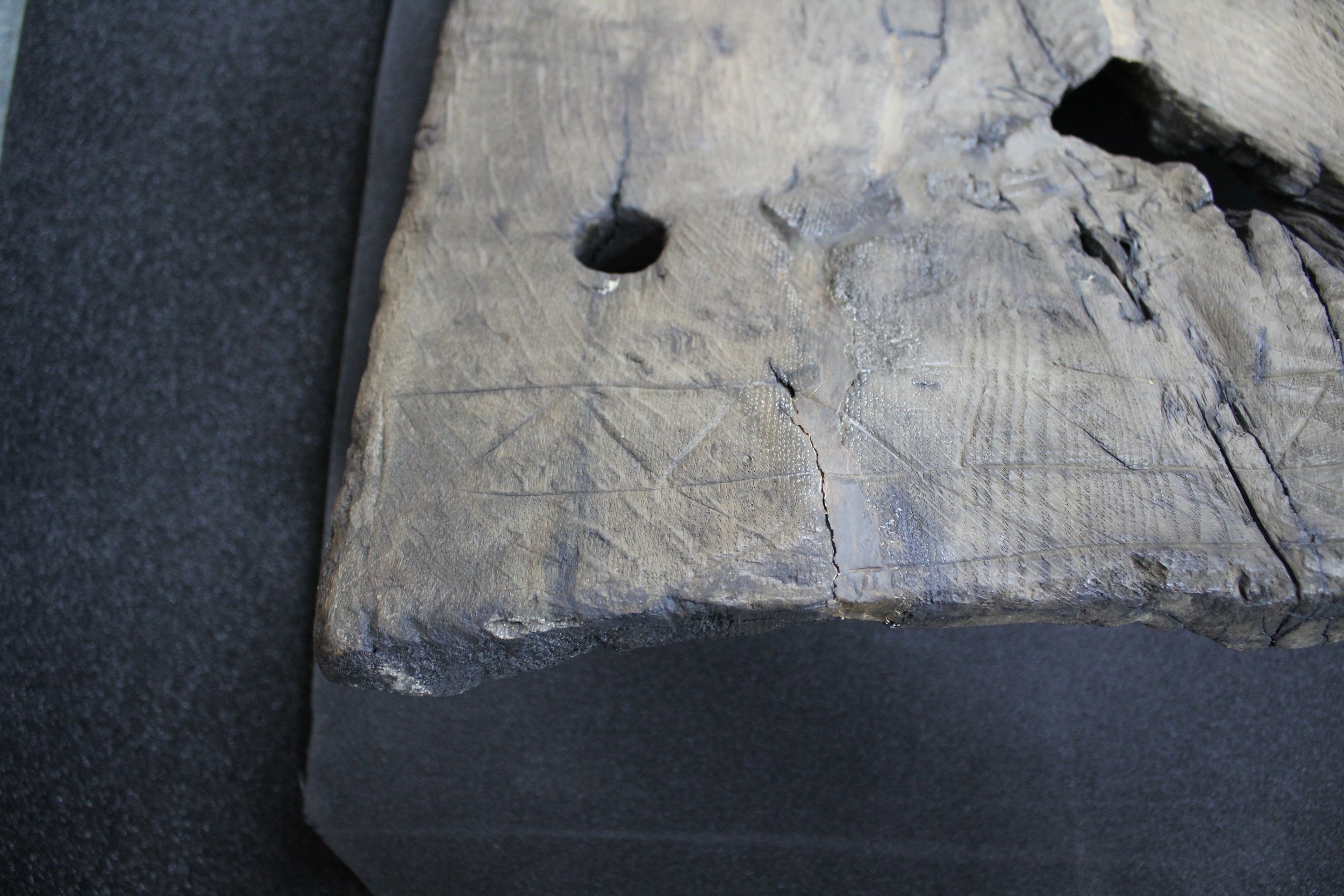
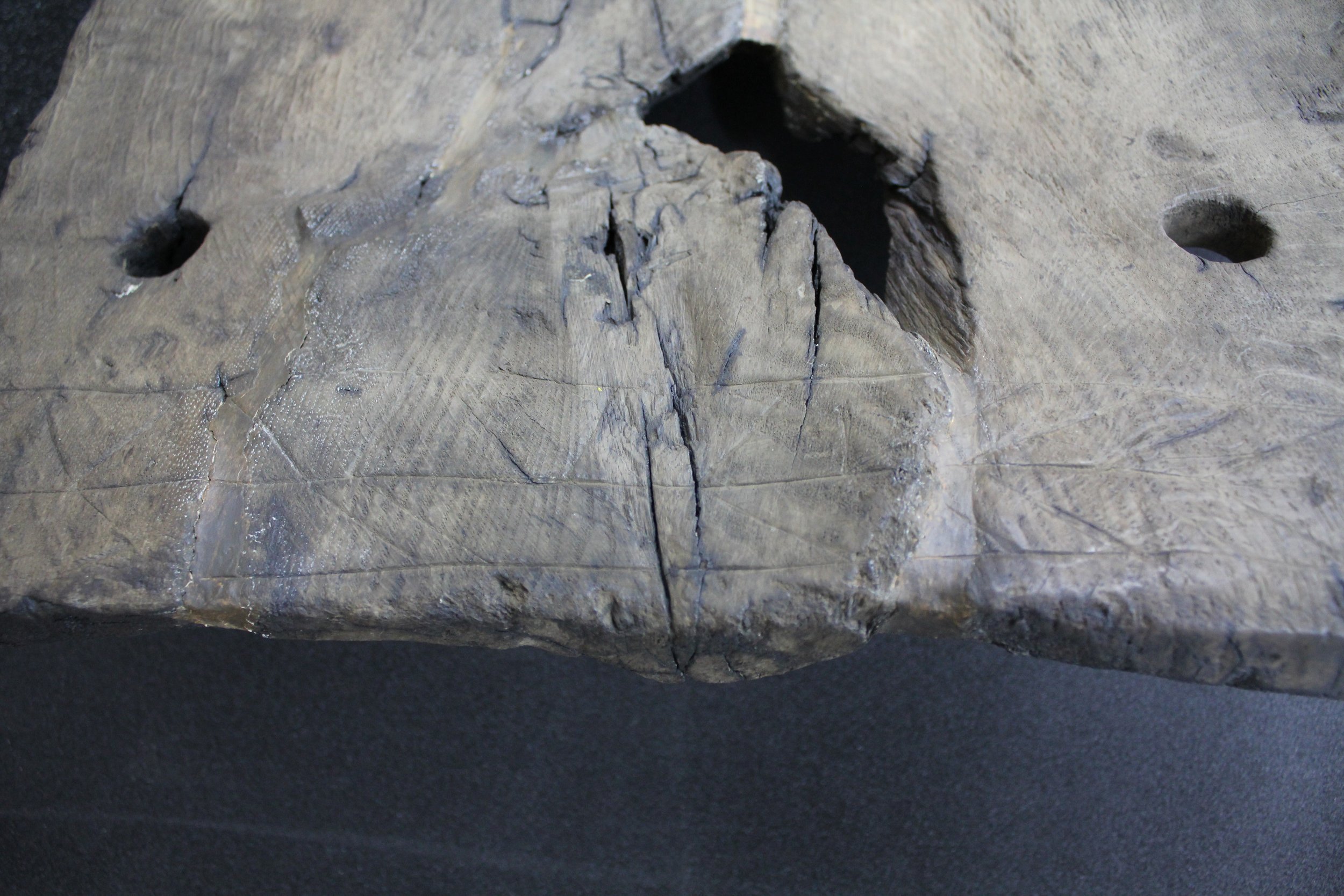
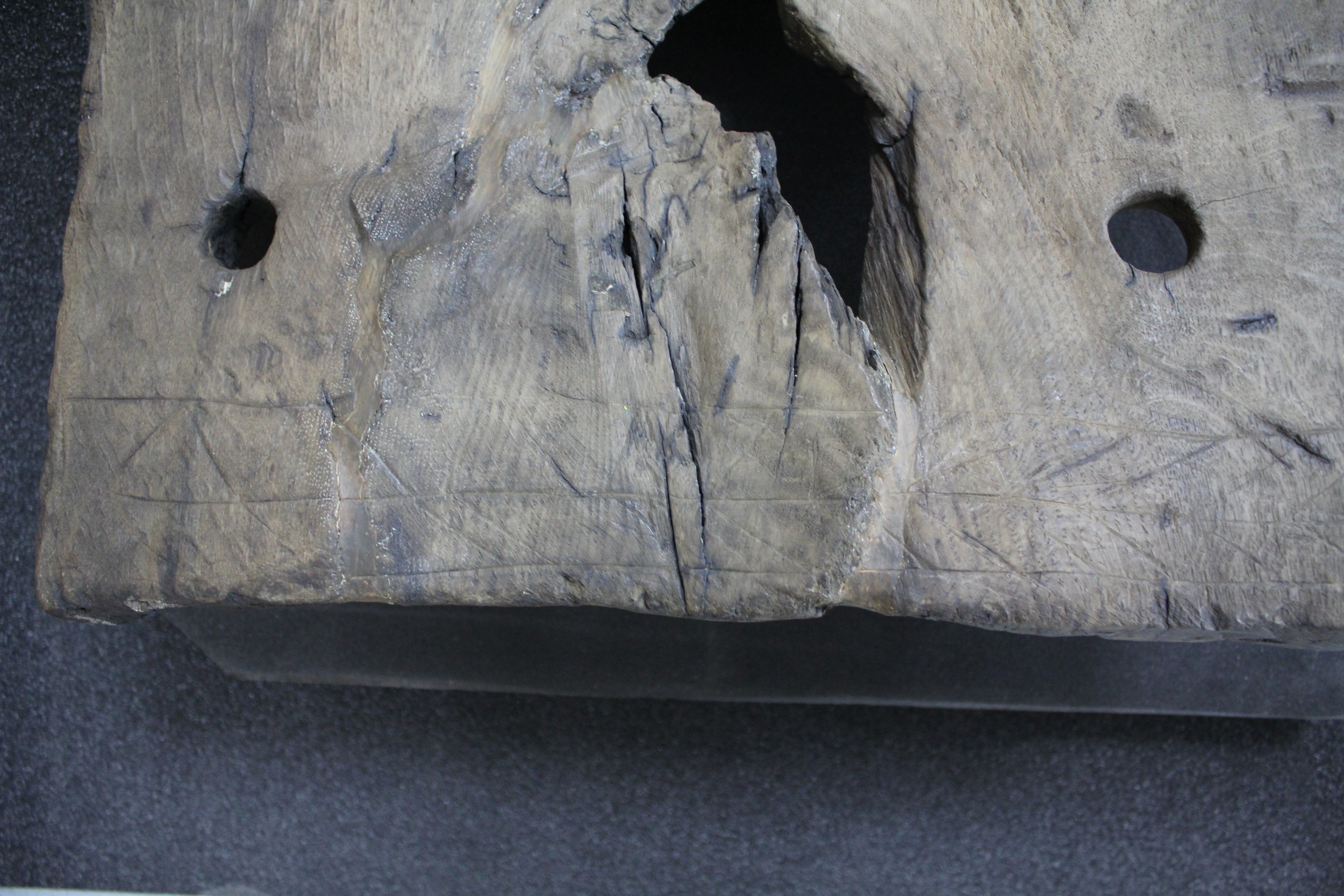
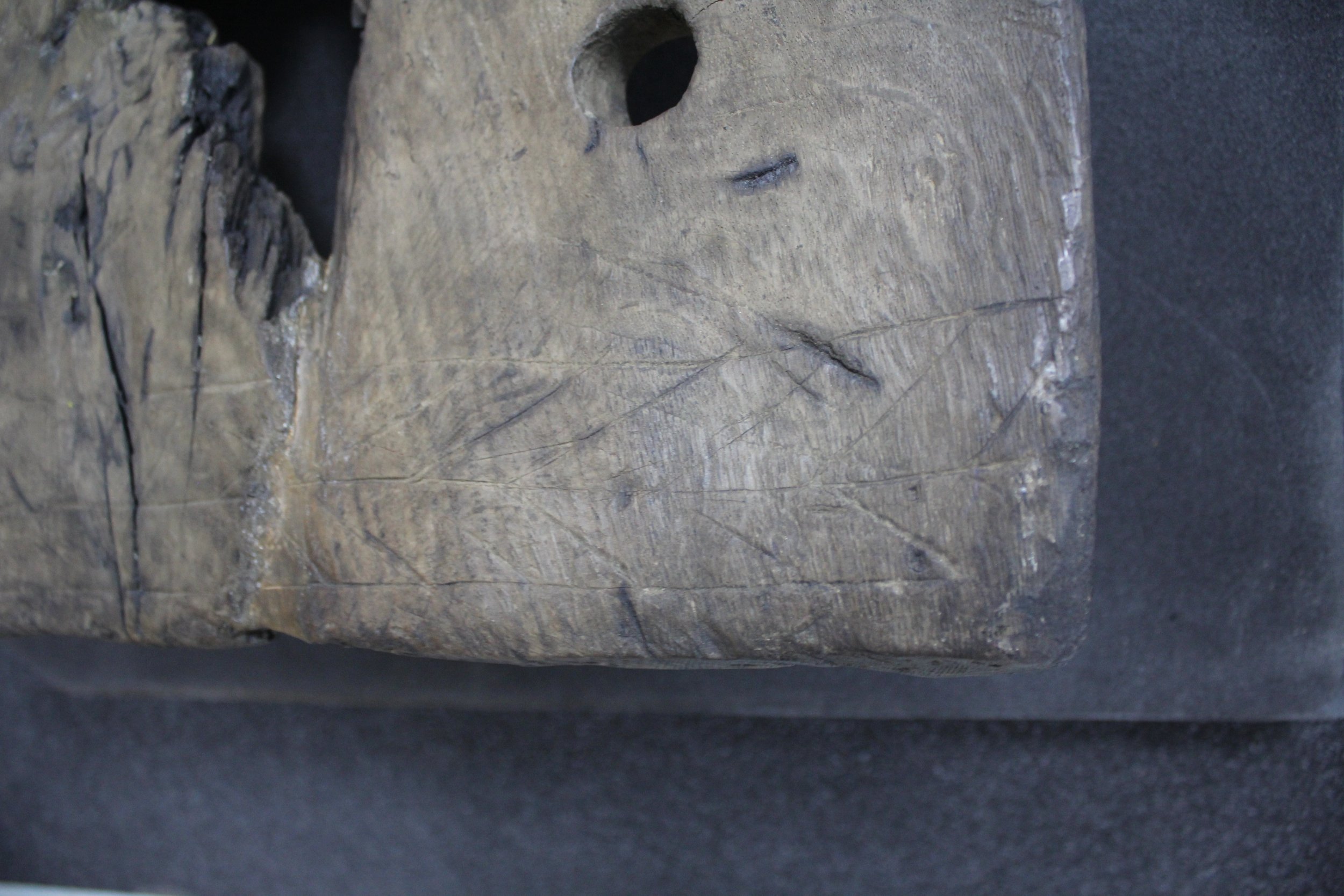
The toilet seat had been conserved in the past, before coming to AOC. The seat was split in two along its length at the time of discovery, so the two pieces had been joined together using a gap filler, which was painted to match the colour of the wood. Other small cracks had also been filled. However, these repairs had begun to fail, perhaps due to the weight of the object, due to changes in humidity, or due to old filler staring to degrade – likely a combination of the three.
Removing the old repair might have caused damage to the object, so AOC’s conservators worked to stabilise the cracks and prevent further cracking. Adhesive was inserted into the cracks using a micropipette, to strengthen the surrounding area. New gap filler with glass micro balloons was used to fill the larger cracks. The new filler was then painted by hand to match the colour of the wood and the old repair.
The white filler is in sharp contrast to the wood
Paints are mixed to match
The filler is carefully painted by hand
The toilet seat was recorded using photogrammetry and a 3D model created from the resulting data. The graffiti doesn’t show up particularly well in photographs, but can be visually enhanced in the photogrammetric model thanks to the option to alter the direction of the light source. Explore the model below, and take a closer look!



